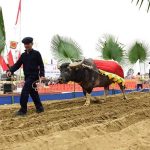How to prepare for your trekking adventure: our 10-step training guide
Trekking is difficult without at least some pre-trip conditioning or a decent general level of fitness. Let’s be honest: it’s a lot of work. The price of a wonderful journey is sweat. Sore calves and aching quads are badges of honor, as are blisters and missing toenails.
But in exchange, you get some of the world’s most wild, clean, and jaw-dropping landscapes. And guess what? The more you prepare for your epic hike, the less difficult it will be.
1. Begin walking right away (it’s never too early to begin training).

This may seem to be the most natural first move (pardon the pun), but you’d be shocked how many people don’t take it. What is the perfect way to dress for a long walk? Take those long hikes. Start with short distances and work your way up to the distance you’ll be trekking on your journey. When you first begin your training, allow a day between and a walk to allow your body to heal. However, when the body improves, continue to do back-to-back workouts each day – this will help you develop endurance for the arduous nature of a ten-day walk, where you won’t have the option of rest days.
2. Make sure you’re walking properly
You’ve been doing everything since you were around a year old, so it’s important to have an eye on how you’re walking and if you’re doing everything right. Make sure you land on your heel first, then roll onto your toe, propelling you onto the next move (this will help reduce the chance of shin splints and tendon pulls – yuck). Keep your head high, your eyes forward, and your shoulders flat as you walk.
3. Try using walking poles

4. Train with a backpack
On virtually all of our trekking journeys, you would not be wearing your main bag, but rather a lightweight daypack containing necessities such as your camera, food, sunscreen, water, and wet-weather clothes. Make sure you’re pushing yourself with a weighted bag for all of your days/weeks/months of exercise. If you really want to press things, load your backpack with a few additions so it’s a little bigger than what you’ll be hiking with on the journey – it’ll make the eventual trek feel like a stroll in the forest (chortle).
5. Invest in a good pair of shoes

On a hike, your feet are your most important body element, and it doesn’t take long to hold them in tip-top condition. First, purchase a pair of high-quality, water-resistant hiking boots with plenty of protection and ventilation. Then put them on. How do you go about doing this? Wear ’em all the time. On running runs, walks to the store, to college, and to formal events (well, maybe not). But you get the idea: by wearing them as much as possible in the weeks and months leading up to the trek, you can prevent blisters, bunions, and toenail loss. Then, buy a few pairs of high-quality hiking socks (preferably a wool/nylon blend) that will wick moisture and keep your feet comfortable.
















